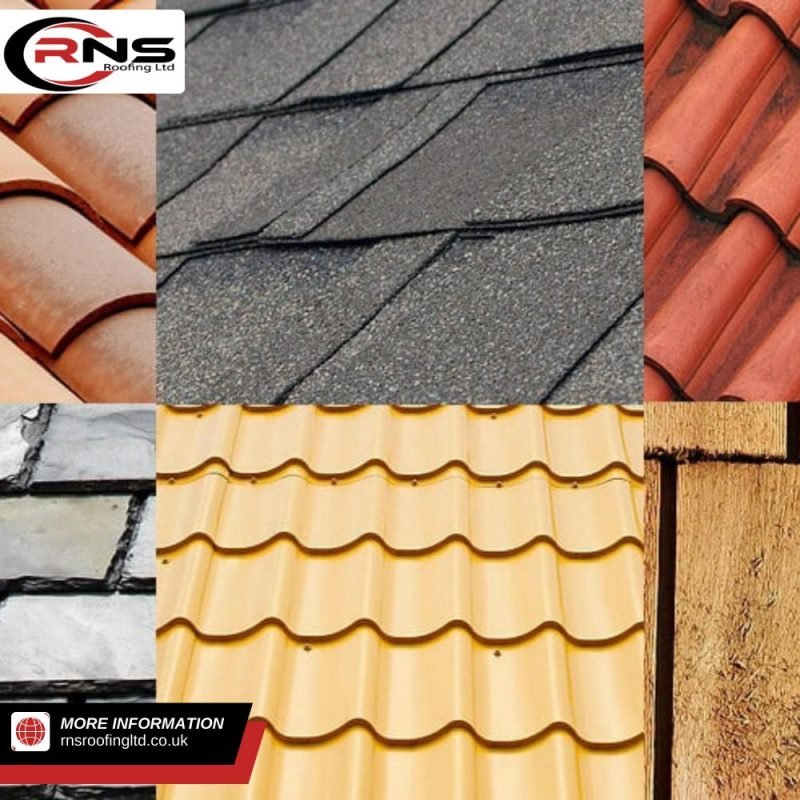You’ve decided it’s time for a new roof. Replacing your roof is a major investment, so you want to choose a material that suits your needs, budget, and home style. The options can be overwhelming, from asphalt to slate to metal. How do you determine the best types of roofing materials for your situation?
This guide provides an overview of the most common residential roofing materials to help you make an informed choice. We’ll explore the pros and cons of each option, including cost, durability, maintenance needs, and appearance. You’ll learn which materials are best for certain architectural styles and climates. With this information, you can confidently select a new roof that will protect your home for decades while complementing its design. The right roof for your house is out there—you just need to know where to look.
Asphalt Shingles: The Most Popular Residential Roofing Material
Asphalt shingles are the most popular roofing material for residential homes in North America. Made of fiberglass mats saturated with asphalt and topped with mineral granules, asphalt shingles offer an affordable and versatile roofing solution.
There are two main types of asphalt shingles: three-tab shingles and architectural shingles. Three-tab shingles are the most basic, with tabs that create a flat look. Architectural shingles have a textured, dimensional appearance with staggered edges that emulate the look of wood or slate. Architectural shingles typically last longer and provide better protection.
Asphalt shingles have many benefits for homeowners:
- Affordability: Asphalt shingles are inexpensive to purchase and install compared to other roofing materials like metal, tile, or slate.
- Ease of installation: Asphalt shingles can be installed quickly by roofing contractors and require minimal structural reinforcement.
- Variety: Asphalt shingles come in a range of styles, textures, and colors to suit any home exterior and architectural style.
- Weather resistance: High-quality asphalt shingles can withstand impacts, weathering, and normal wear and tear for up to 30-50 years depending on the type and brand.
With their combination of affordability, style, and weather protection, asphalt shingles will likely remain the most popular roofing choice for North American homes into the foreseeable future. When installed properly by a certified roofing contractor, asphalt shingles can provide decades of durable and dependable protection for your home.
Metal Roofing: A Durable and Energy-Efficient Option
As an alternative to traditional asphalt or wooden shingles, metal roofing offers many benefits for homeowners seeking an energy-efficient and long-lasting roofing solution.
Growing popularity
The popularity of metal roofs has grown considerably in recent years due to their durability and sustainability. Galvanized steel, aluminum, copper, and zinc are common metals used in residential roofing. These metals can last 50-100 years and are 100% recyclable at the end of their lifespan.
Durability
Galvanized steel, coated in zinc to prevent corrosion, is a budget-friendly and low-maintenance option. Aluminum is lightweight, rust-resistant, and available in bright colors. Copper develops a patina over time and has a distinct aesthetic appeal. Zinc, while more expensive, has a lifespan of up to 100 years.
Energy efficiency
Metal roofs are also energy efficient. Their reflective surfaces deflect much of the sun’s heat and UV radiation, keeping attics and homes cooler in summer and reducing energy bills. Properly installed, metal roofs can also withstand winds of up to 140 miles per hour.
Eco-friendliness
If you seek an eco-friendly roof that will endure for decades, metal roofing deserves your consideration. Consult a reputable contractor to determine which type of metal roof will suit your needs and budget. A metal roof may cost more upfront but will save money and the environment over the long run.

Roofing Tiles: An Elegant and Long-Lasting Choice
Tile roofing provides an elegant and long-lasting roofing option for many homeowners. Tile roofs can last 50-100 years and provide excellent protection from the elements. They are also resistant to rot, fire, and insects. However, tile roofs tend to cost significantly more than asphalt or wood shingles.
Durability
Tile roofs are extremely durable and long-lasting. Clay and concrete tiles can withstand high winds, heavy rain, snow, and hail without damage. They are resistant to fading, warping, and cracking over time. With periodic inspections and minor repairs or replacements of damaged or broken tiles, a tile roof can last up to a century.
Appearance
Tile roofs significantly enhance a home’s curb appeal due to their attractive, stylish appearance. Tile roofs come in a variety of profiles, textures, and colors to complement any architectural style. Clay tiles provide a rustic, handcrafted look, while concrete tiles can mimic the appearance of wood or slate. Tile roofs make a bold statement and can increase a home’s property value.
Types of Tiles
The two most common types of roof tiles are clay tiles and concrete tiles. Clay tiles are made from terracotta clay and baked in a kiln. They offer a traditional look but tend to be more expensive. Concrete tiles contain sand, cement, and pigments. They are more affordable but can appear flat. Within these categories, common styles include flat tiles, barrel tiles, and shingles. Tiles also come in an array of colors to suit your tastes.
In summary, tile roofing provides an elegant roofing solution that can withstand the test of time. Although tile roofs have a higher upfront cost, their longevity, durability, and attractive appearance make them a worthwhile investment for any homeowner seeking a stylish and long-lasting roof.
Slate Roofing: Natural Stone Beauty With Unmatched Durability
Slate roofing is one of the most prestigious and durable roofing materials available. Composed of natural stone, slate roofs can last up to 200 years. Slate is an excellent insulator and is naturally resistant to rot, insects, and weather. However, due to its weight and cost, slate roofing may not suit every home or budget.
There are several types of slate used in roofing, including:
- Sea green slate: Blue-gray in color, sea green slate is a popular, mid-range option.
- Vermont slate: Quarried in Vermont, this slate comes in shades of gray, green, purple and black. Vermont slate is highly durable but more expensive.
- Spanish slate: Imported from Spain, this slate has a distinctive reddish color and decorative grain. However, it may be less durable than domestic slate types.
- Unfading black slate: As the name suggests, this slate retains its dark black color over time. Unfading black slate has a smooth texture and provides a dramatic look, but it tends to be among the more expensive slate options.
A slate roof requires professional installation to ensure it is securely and properly installed. Slate roofing tiles are heavy, so the roof frame and structure must be able to support the weight. Installation costs for a slate roof typically range from $30 to $60 per square foot, depending on factors like the slate type, roof pitch, and contractor rates in your region.
While a slate roof demands a significant upfront investment, it can significantly increase your home’s value and curb appeal due to its natural beauty and longevity. For many homeowners, the prestige and durability of slate roofing make it worth the investment. With proper installation and occasional repairs and maintenance, a slate roof can provide protection and peace of mind for generations.
Composite Shingles: The New and Improved Asphalt Shingle
Composite shingles, also known as fiberglass or asphalt shingles, are among the most popular and affordable roofing materials. They are composed of fiberglass mats saturated with asphalt and coated with mineral granules. Composite shingles provide an attractive, durable roof covering at a reasonable cost.
What composite roofing is and how it’s made
Composite shingles are an upgrade from traditional asphalt shingles. They are lighter, more fire-resistant, and more durable. The fiberglass mat reinforces the shingles, preventing cracking and tearing. The mineral granule coating protects the shingles from damage caused by ultraviolet (UV) radiation from the sun. Most composite shingles come with warranties of 20 to 50 years.
The Versatility of composite shingles
Composite shingles are available in a variety of styles that mimic the appearance of wood shakes, slate, and tile. Shadow lines, color blending, and multi-dimensional designs provide an authentic look. Popular brands of composite shingles include GAF Timberline, Owens Corning Supreme, and CertainTeed Landmark
Instructions to know while installing
When installing composite shingles, it is important to follow the manufacturer’s instructions carefully. The shingles must be placed with offsets and gaps to provide water channels and the recommended number of layers for optimal protection. Proper ventilation, water barriers, and drip edges are also required. Composite shingles can fade over time, so choose a color that complements your home’s style and exterior.
Affordability of Composite Shingles
Composite shingles offer an affordable, low-maintenance roofing solution for many homeowners. With their durability, style options, and long warranties, composite shingles provide an attractive and long-lasting roof covering. For the best results, be sure to install the shingles correctly according to the specifications. Composite shingles can transform the look of your home while protecting it from the elements for decades.
Conclusion
As you can see, selecting a new roof is an important decision with many factors to consider. Do your research on the pros and cons of different materials like asphalt, metal, slate, and tile. Think about your needs for durability, longevity, style, and budget. Asphalt and metal tend to be the most affordable and durable. Slate and tile last longer but cost more.
Once you determine the right material for your home and needs, find a reputable roofer to install it properly. A high-quality, well-installed roof will protect your most valuable asset for decades to come. With so many excellent options available today at a range of price points, you can choose a roof that balances your practical and aesthetic needs. Make this critical choice carefully and you’ll enjoy the results for years to come.
People Ask Questions About Types of Roofing Materials
What are the most common types of roofing materials?
The most common types of roofing materials include asphalt shingles, metal roofing, wood shakes, clay tiles, and slate.
What factors should I consider when choosing a roofing material?
Consider factors such as durability, cost, aesthetics, climate suitability, and maintenance requirements when choosing a roofing material.
How long do asphalt shingles typically last?
Asphalt shingles usually have a lifespan of 20 to 30 years, but this can vary based on factors like climate and maintenance.
What are the advantages of metal roofing?
Metal roofing is durable, lightweight, and resistant to fire, insects, and rot. It also has a long lifespan, often exceeding 50 years.

